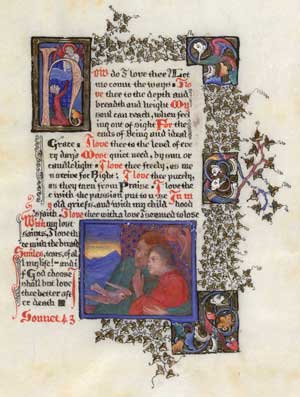

The quality of true love the speaker especially stresses is its spiritual nature. The theme of Barrett Browning’s poem “How Do I Love Thee?” is that true love is an enthralling passion. The poet concludes the sonnet by telling her husband that she will love him even more after being gone if God allows her. Near the conclusion of the poem, she states that her every smile, tear and breath is a reflection of her love for her better half. Finally, she compares her love to what she once felt for people she used to admire but has somehow fallen out of her favour. The speaker then compares her love to the passionate intensity with which she once tried to overcome her past pains and how she believed in good things when she was a child. She then compares her love to humanity’s experiences as a whole, showcasing her love as pure, free, and humble, just as decent people strive to do good in the world without expecting any reward or praise. Next, she illustrates a more silent love that sustains her daily, just as the light of the sun illuminates her days. Initially, she starts describing her love as a powerful force of her soul so great to the extent that she attempts at measuring it in three-dimensional terms. She describes how her love is multifaceted since it can be compared to many aspects of life. The speaker describes how she loves her husband. As it is well-known that Elizabeth Barrett Browning has dedicated this poem to her spouse, she is assumed to be the speaker addressing the poem to her husband. The entire sonnet addresses the lover, “thee,” who can also be considered the listener.

The author starts the poem by asking the question, “How do I love thee?” and responding with, “Let me count the ways.” One might assume that the speaker is either musing out loud – as one might do when writing a letter – or responding to a lover who might have presented such a question. Students can also check the English Summary to revise with them during exam preparation.

The poem deals with the poet’s passionate adoration for her beloved with radiant pictures of her eternal bond, which will keep her connected to her beloved even after death. It is her most well-known and best-loved poem that first appeared as sonnet 43 in her collection of Sonnets from the Portuguese (1850).Įven though the poem is traditionally interpreted as a love sonnet from Elizabeth Barrett Browning to her husband, Robert Browning, the poet, the speaker and the addressee are never identified by name.

Sonnet 43 Analysis: “How do I love thee? Let me count the ways” is a well-known sonnet written by the 19th-century poet Elizabeth Barrett Browning.


 0 kommentar(er)
0 kommentar(er)
